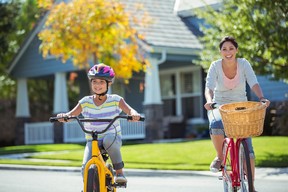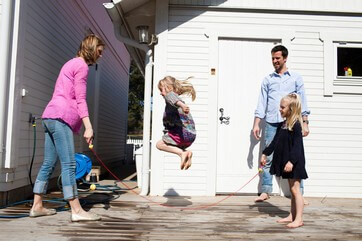That’s right, you read it correctly. I want to become obsolete – over and over and over again! Now let me explain myself. I teach in an elementary building that houses grades K-4. Our middle schools run from 5th to 8th grade and our High School holds grades 9-12. I want to present my material in such a way that when my students “graduate” from my building, they don’t need me anymore. I want them to know everything that they possibly should to be able to do but especially the following two things: First, I want them prepared to go into their summer vacation able to be physically active 10-year-old individuals. Second, I want to empower them to return to school in September armed with everything they need to be able to build on their skills and knowledge in our middle school physical education curriculum.

I’ve realized I need to keep both the short term and long term in mind when I plan and teach my lessons. In the short term, I need to ask if I am teaching them the skills they’ll need to be able to enjoy being active on their own? I don’t want to create basketball players, soccer players or any other kind of “player.” Rather I want to teach my classes to enable my students to feel comfortable and enjoy using a basketball, soccer ball, or any other kind of equipment; either on their own, or with their friends. Have I taught them how to organize and play something that they made up themselves? Do they know how all of those skills I taught them can fit into something fun to do?
If I were to see one of my students at a playground over the summer with a ball, I’d hope to see them enjoying themselves using it. Maybe they are shooting baskets with their dad, or mom? Maybe they are bouncing the ball as high as they can and trying to catch it? Maybe they are seeing how far or how high they can kick it? If they don’t have anything with them, I hope I would see them creating something constructive and fun to do. Maybe climbing on a playground structure, or a nearby tree? Maybe having fun running and chasing each other? How about something like asking their mom if they can ride bikes together? What I hope I don’t see them doing is sitting still, all by themselves.

In the long term, I’m concerned I’ve given them all the skills and knowledge they’ll need to learn even more in 5th grade at our middle schools. I don’t just teach what I feel comfortable teaching. I strive to teach my students the prerequisites skills they’ll need to succeed in our middle school curriculum. In our district, we base everything on SHAPE America’s grade level outcomes. Everything I teach at the elementary level is based on this document. If you haven’t seen this document, find a SHAPE America member and see it. Or better yet, join SHAPE America yourself. This document lays everything out by grade level. It tells you what a 1st grader is expected to do and how in preparation to become a 2nd grader… all the way to 12th grade.
I have five years (grades K-4) to empower my students with the skills they need to continue learning at the middle school. I don’t spend those five years just drilling a lay-up, or a football spiral, or a crisscross jump rope trick. I progressively teach skills that eventually build on a final 4th grade outcome. For example, my kindergarteners begin by throwing a ball underhand, stepping with their opposite foot. In 1st grade they begin to add more critical elements of a throw. By 2nd grade, we start with an overhand throw. 3rd grade begins with throwing for distance and force. And in 4th grade they learn to be accurate with an overhand throw.
That throwing motion is now applied to different equipment. Skills like a soccer kick, bowling approach, basketball lay-up, hockey shot, tennis strike, baseball swing and lacrosse throw are all tied together by a common theme. They all use a mature throwing motion (that they have now built up to): Stand sideways, step with front foot, throw/kick/strike with back hand and follow through to a target. This further builds to another 4th grade outcome where they need to be able to control an object on the move then shoot to a target.

Whether they are controlling a basketball, soccer ball, hockey puck or anything else, “control” is always the same. We define that as the object staying 1-2 steps away from them as they move. Controlling an object on the move is important to our students because in our middle schools, a defender is introduced. That is where things like fakes, pivots and creating and denying space are introduced. It’s important that my students enter our middle school curriculum having learned to control something on the move so they are ready to do that with a defender now in front of them.
You see if I successfully do these things it makes me obsolete to my students. They’ve learned everything that they need to learn and are ready to move on. Whether that means moving onto self-directed activity over the summer, or it means continued learning at our middle school it doesn’t matter. What matters is that I have empowered them to continue to learn to enjoy being active.
The way I see it, I have two more years to get my 3rd grades to that point, three more years to get my 2nd graders to that point, four more years to get my 1st graders to that point and five years to get my kindergarteners there. That cycle is always re starting! It’s my goal to be obsolete over and over and over again!

I completely endorse the views presented here by Tom! His perspective is to create a positive motivational climate whereby students become “self-regulated learners.” Every professional needs to realize that young children are capable of learning many concepts that will aid in developing a physically active lifestyle. When presented in developmentally appropriate ways, the sequential learning that is necessary to build the skills, knowledge, and values that will result in a person graduating from high school as a physically educated/physically literate individual should be our #1 focus in every lesson.
Long gone should be the notion that: (1) children are not capable of learning important concepts; (2) PE is all about fun and activity; (3) we cannot teach values; (4) as a teacher, I do not have time or support to teach all I know is necessary – remember, we have technological learners who can engage successfully in out-of-class learning: (5) we only need to teach and focus on skill development, as the more skilled will seek more opportunities to participate – remember – those who may not measure up to “our” expectations also deserve the instruction that will help them make health-enhancing decisions and will incorporate regular participation in physical activity; and, (6) those will strong sports skills will be the most active throughout life – that is a continuing conversation that may not be true for all.
Teaching self-regulated or self-managed concepts and skills may be a stronger form of learning. To consider that adults today need a “personal trainer” to help them work out is a strong indictment of the Physical Education that did not prepare people for adult lifestyles. To me, the need to use a personal trainer to work out/be active is nothing more than remedial education. If a person graduates from high school and does not have all the knowledge and skills related to constructing their own health-enhancing lifestyle, and the ability to implement this lifestyle, then the old PE could be considered as malpractice.